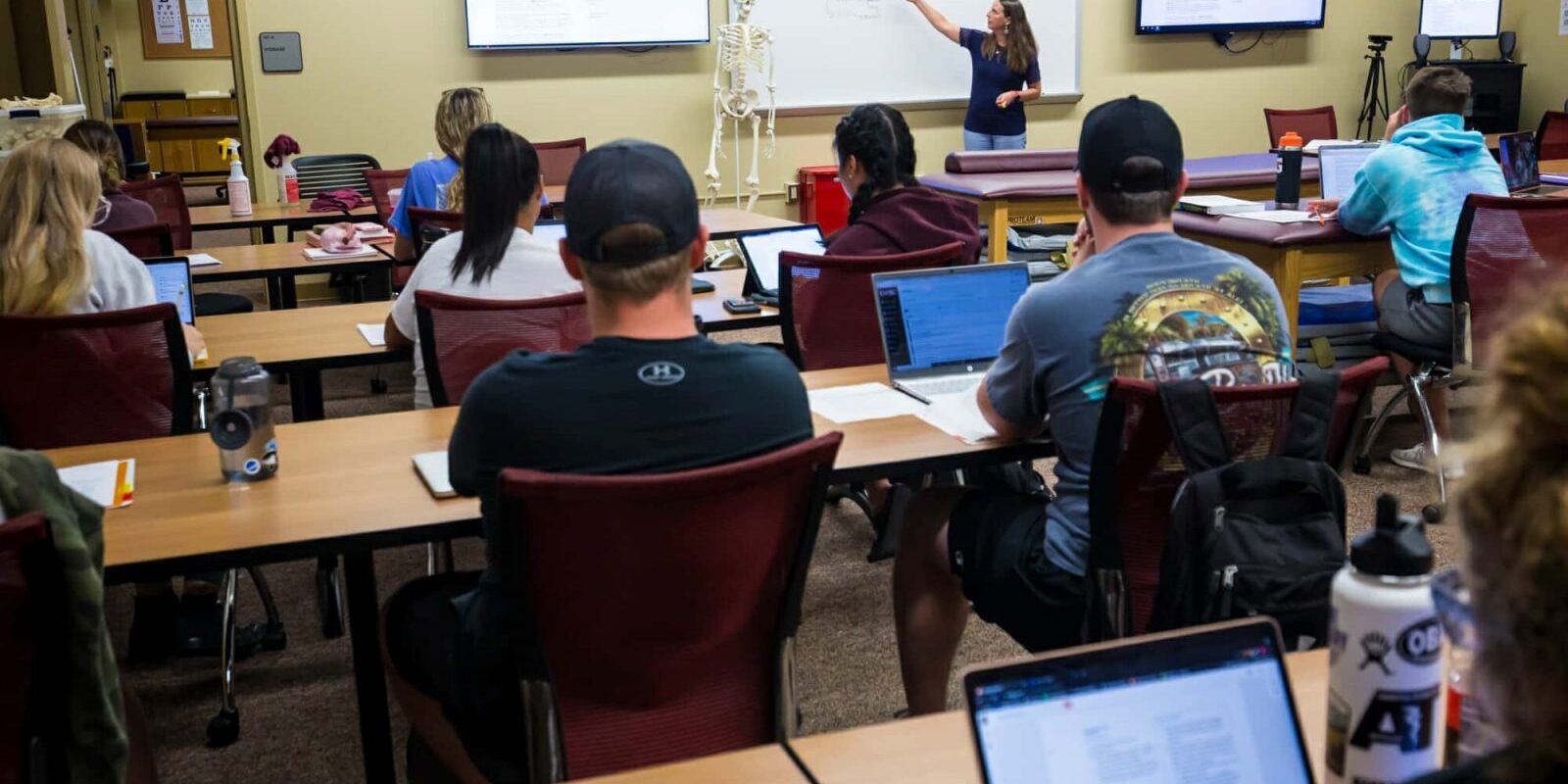
The Application Process
After identifying target programs, it’s time to start the application process. Review each program’s requirements carefully and create a plan to gather, create, or request all of the materials. A spreadsheet can help you easily list each program and its application requirements, interview dates, and deadlines to stay organized and on track.
Your next step depends on whether the school uses its own application or the Athletic Training Centralized Application System (ATCAS). For the schools on your list that use ATCAS (see the list at the bottom of this page), you'll upload your information and documentation to one location and send it to multiple schools with just a few clicks. For schools that use an institution-specific application, you’ll need to plan for the time needed to complete separate applications.
Complete each AT program’s admissions requirements
Prerequisite Courses
All programs minimally require you to complete the following prerequisite courses: biology, chemistry, physics, psychology, anatomy, and physiology. Some programs have additional prerequisite requirements, so check each program’s website carefully. Some prerequisite courses can be in progress at the time of application; you just need to complete them before starting the program. In early assurance programs where you enter as an undergraduate and then matriculate into the master’s degree program during your fourth year of study, the prerequisites are built into your undergraduate program. Direct questions as to which courses will fulfill requirements to specific institutions. For example, some institutions don’t accept online courses for courses with a laboratory component, and others do.
AT Programs Prerequisite Courses
Observation Hours
Try to connect with a local Athletic Trainer to complete any observation hours that may be required for the program you are applying to. Job Shadowing can be done anywhere you may find an Athletic Trainer, such as local colleges, performing arts venues, and medical practices. Starting early will help you out in the long run.
Letters of Recommendation
Your preferred school will likely require you to submit several recommendation letters. Some programs specify that a letter from a practicing athletic trainer and/or former professor be included. Writing a good letter of recommendation takes time, so it's important to ask for these letters as early as possible. You don't want the writer to produce a lackluster letter because they're rushing to meet a tight deadline. Choose recommenders who know you well enough to explain why Athletic Training is a good fit for your skills and personality. Admissions officers want to know why you would make a great addition to their program; they don't want to read a generic letter that could apply to almost anyone.
GRE Scores
The Graduate Record Examinations (GRE) is the standardized test for graduate schools across the United States. Programs that use ATCAS may have you submit scores directly to that service using an institution-specific code. Other programs ask that you send the results directly to the institution. Read instructions carefully. Each program sets its own requirements or recommendations around the GRE when applying to their graduate school. When doing your research, note what the school says about GRE scores. Some schools require GREs only if your GPA is below a certain level. Others indicate that GRE scores are optional.
Personal Essay
Your personal essay, or admission essay, is the next item on your list — and you can start it at any time. An earlier start provides more time to polish it, proofread it, get feedback, or add in new experiences. Follow each school's essay prompt carefully and make sure you address each requirement. The school may provide guidelines on format or maximum word count, so be mindful of these and treat them as requirements, not suggestions. Remember that the prompt is provided for a reason as well, so stay on topic to keep attention, stay relevant, and ultimately, provide an essay that strongly makes your case for being accepted to the program and your future as an Athletic Trainer. While using artificial intelligence to generate your essay may be tempting, it risks a bland, impersonal result.
Admissions Interview
The admissions interview is your chance to convince the interviewer that you have what it takes to succeed as an Athletic Trainer. Prepare for this occasion by watching interview videos online, reviewing common interview questions, recording yourself answering questions, and participating in mock interviews. If you're currently in college, check with your school's career center to see if you can set up a mock interview with a staff member. If you're not a student, ask a trusted friend or family member to play the role of an interviewer. Treat the mock interview as if it's the real thing by speaking clearly and with confidence and answering each question thoroughly. Some schools require a campus visit for the interview while others have a virtual option. Not all programs require an interview.
International Students, TOEFL / IETLS
International students can enter an accredited professional athletic training program in the United States or abroad. Students for whom English is not their primary language usually need to demonstrate proficiency in English through either the TOEFL or IELTS exam.

Submit Your Application
Now it's time to submit your application.
Submit each application as soon as it's completed.
If paying for your applications on ATCAS is a substantial financial burden, check out the Fee Waiver Assistance Program sponsored by the CAATE.
Need help?
If you need advice or support from a professional, we have AT education experts available to help you. You can submit a request in the form below and someone will reach out to answer your questions and address your concerns.
